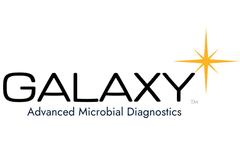Refine by
Clinical Testing Articles & Analysis
50 articles found
It is the process that bridges the gap between basic research and clinical testing, allowing for the evaluation of potential drug candidates in biological systems before they are tested in humans. ...
Despite the seriousness of the need for HMBTs in children, the literature is extremely sparse for this age group, and testing clinics have to rely on the more robust adult consensus guidelines. ...
Melissa is a member of both the Irish Institute of Clinical Measurement Scientists and the British Society of Gastroenterology, as well as the founder and director of Gastrolife Clinic in Ireland. The webinar covers some important topics: · SIBO & dietary malabsorption · Finger-prick food intolerance testing. Does ...
ESMO updated its recommendations for NGS in advanced cancers this year, urging broader use of NGS in additional cancer types and the inclusion of tumor-agnostic biomarkers. The ESMO Precision Medicine Working Group (PMWG) first published its recommendations for when to use next-generation sequencing (NGS) in routine practice for patients with metastatic cancers in 20201. At that time, based ...
To ensure the effectiveness and safety of these antibody drugs, it is necessary to perform activity testing.Definition of Antibody ActivityThe activity of an antibody drug usually refers to its ability to bind to the target antigen and how it affects the target in a biological function, such as neutralizing viruses, killing tumor cells, or regulating immune responses.Services at Mtoz Biolabs1. ...
The process typically involves several stages, including target identification and validation, hit identification and lead optimization, preclinical testing, and clinical trials. Throughout the entire process, Alfa Cytology holds a strict quality system with various services covering AI-based drug design, hit-to-lead, drug screening, and lead optimization. ...
POCT (Point-of-Care Testing) refers to clinical and bedside testing conducted in close proximity to patients. ...
In vitro DMPK services, along with absorption, distribution, metabolism, excretion, and toxicity (ADMET) studies, play a vital role in predicting pharmacokinetic properties and potential adverse effects of drugs before they reach the clinical testing phase. In vitro DMPK services provide an array of tests that simulate the human body's response ...
In vitro DMPK services, along with absorption, distribution, metabolism, excretion, and toxicity (ADMET) studies, play a vital role in predicting pharmacokinetic properties and potential adverse effects of drugs before they reach the clinical testing phase. In vitro DMPK services provide an array of tests that simulate the human body's response ...
These treatments include antibiotics to treat lung infections, airway clearance techniques to clear mucus from the lungs, nutritional support, and medications that target specific mutations in the CFTR gene. Multiple clinical trials are currently underway to test new therapies for CF, including gene therapy and drugs targeting specific mutations in the CFTR ...
The AI predicts peptides from in vitro to clinical efficacy with an 80% success rate. The development of an ingredient goes through three phases, from discovery to preclinical biology testing and clinical trials. ...
Through its bioactive peptide finder, Magnifier NπΦ, the company can boast a clinical trial success rate of 80%. Development of an ingredient goes through three phases, from discovery to preclinical biology testing and clinical trials. ...
Serum enzyme tests have been used in clinical practice for a long time, such as increased amylase activity in serum and urine of patients with acute pancreatitis. ...
December 2022 edition Given the regular posts of peer-reviewed scientific publications on the Medis QFR®, it is clear that this angio-based solution for coronary physiology is extensively used in clinical research and practice. We would like to share these publications with you so that you remain up to date about the research that is ongoing worldwide with this ...
The BEAR Implant is the first medical advancement to enable your body to heal its own torn anterior cruciate ligament (ACL). That’s a big deal, because until now your ACL would have been replaced with either another tendon from your body or a tendon from a deceased donor. The BEAR Implant is different because it works with your own blood to heal the torn ends of your ACL back ...
As an alternative to blood glucose testing, a short 30 day monitoring of glycated albumin should be examined. ...
Muscle loss / muscle wasting is the condition in which, proteolytic systems for protein degradation are activated, while protein synthesis decreases, thereby resulting in muscle fiber shrinkage. This condition may be due age or might be due some chronic conditions like Diabetes mellitus (DM) or chronic kidney disease (CKD). Extreme muscle wasting often results in weight loss. Such a condition is ...
Generally, signs of disease are concrete changes to the body either observed during a clinical exam or documented with clinical testing. Symptoms are how the patient experiences the disease like tiredness or soreness. ...
Peroxidase, usually derived from horseradish, is a common enzyme used in clinical testing reagents. It is widely used not only in several biochemical assays but also in immunoassay (ELISA) kits. ...
Although the HAV is acellular when implanted, extensive preclinical and clinical testing has demonstrated that the HAV subsequently repopulates with the recipient’s own vascular cells. We report a first-in-man clinical experience using the HAV for arterial reconstruction in patients with symptomatic peripheral arterial disease. ...
















